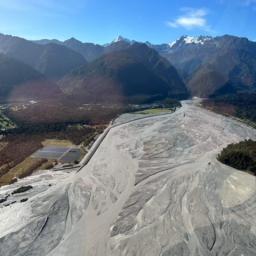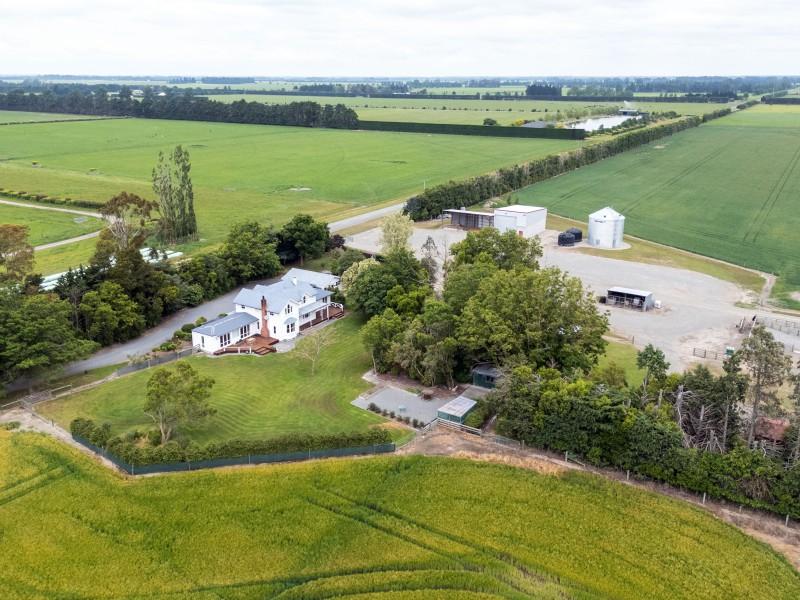Franz Josef river shifts radically after storm
By local democracy reporter Brendan McMahon:
A powerful storm has accelerated the radical shift of the Waiho (Waiau) River at Franz Josef, moving 95% of the river's main channel to the Tatare Stream north of the tourist hotspot.
And with further bad weather forecast - up to 200mm of rain is expected this weekend - West Coast Civil Defence has swung into action over the river change and the potential risk.
West Coast Regional Council staff and river engineers visited the area on Wednesday to assess the river following last weekend's state of emergency amid heavy rain warnings.
The river radically changing course is serious, but with "no immediate risk" to life, council chief executive Darryl Lew said.
"I'm awaiting [Civil Defence] advice but clearly we will go and talk to the land owners down that Tatare Stream," Lew said on Thursday.
The amount of rain forecast this weekend was a concern for the river, so Civil Defence is gearing up, he said.
The rapid build up of the Waiho River-bed and the risk of its increasingly changing course posing a high risk to residents and visitors to the tourist hotspot of Franz Josef on the north bank has been a long standing worry for West Coast authorities.
In mid-2023, the emerging issue of the river bed shifting north and dropping into the Tatare Stream bed forced the council to abandon plans to build a series of flood bunds on that side of the Waiho River.
The bunds were planned as a wider protection scheme on the north bank to secure the future of Franz Josef for the next 15 years.
The heavily avulsing river bed also spurred council to revise and relaunch a 10-year strategy to manage the river, which was released to the community in October.
It primarily advocates removing the stop banks on the south side of the Waiho, which would allow the riverbed to fan out naturally over predominantly rural land to overcome the threat to Franz Josef.
Lew said the weather event last weekend had radically accelerated the Waiho avulsion, with 95% of the main channel of the Waiho now flowing via the Tatare Stream to the northwest.
At the same time, water was seeping in behind the Havill Wall on the Waiho north bank, near the Westland District Council wastewater treatment plant and ponds, about 1.5km from the main town.
Havill Wall was controversially built by the district council following the April 2016 flood which swamped the old Scenic Hotel site.
It has recently been upgraded by the regional council as part of the wider north bank flood protection scheme.
Lew said the on-the-ground inspection on January 24 was their first opportunity to view the area since the river receded from the heavy rain last weekend.
Heavy scouring and "bank attack" was evident on the banks of the usual Waiho River channel near Franz Josef and Waiho Flat, "but that is a secondary concern".
Lew said council engineers and members of the Waiho Technical Advisory Group - used by council last year - had been pressed into action.
The group would consider options in the coming days, including if moving the Waiho River back to its normal course was possible.
In the meantime, council expected to make a further statement on the situation tomorrow [Friday] afternoon, Lew said.
"This potential for the Waiho to avulse and flow into the Tatare Stream was signalled as a strong possibility in the Waiho River Strategy.
"The key issue for us is whether we can do some channel works to manipulate the Waiho River flow back into it's main channel, or not."
Lew said the avulsion was below the district council sewage ponds.
"At the moment there is no direct threat to the ponds. However, at the moment there is considerable signs of seepage behind the Havill bank which protects the ponds."
Asked if that seepage was expected, Lew said council was seeking further geotechnical advice.
"There is no water entering the (sewage) ponds."
Lew said there was no immediate threat to State Highway 6, north of Franz Josef, as a result of the river shifting to the Tatare.
However, if the trend of the main channel of the Waiho into the Tatare was allowed to continue, "the implications are significant".
Best way to use leftovers?
I'm sure you've got some excess ham at home or cold roast potatoes.
What are some of your favourite ways to use leftover food from Christmas day? Share below.

⚠️ DOGS DIE IN HOT CARS. If you love them, don't leave them. ⚠️
It's a message we share time and time again, and this year, we're calling on you to help us spread that message further.
Did you know that calls to SPCA about dogs left inside hot cars made up a whopping 11% of all welfare calls last summer? This is a completely preventable issue, and one which is causing hundreds of dogs (often loved pets) to suffer.
Here are some quick facts to share with the dog owners in your life:
👉 The temperature inside a car can heat to over 50°C in less than 15 minutes.
👉 Parking in the shade and cracking windows does little to help on a warm day. Dogs rely on panting to keep cool, which they can't do in a hot car.
👉 This puts dogs at a high risk of heatstroke - a serious condition for dogs, with a mortality rate between 39%-50%.
👉 It is an offence under the Animal Welfare Act to leave a dog in a hot vehicle if they are showing signs of heat stress. You can be fined, and prosecuted.
SPCA has created downloadable resources to help you spread the message even further. Posters, a flyer, and a social media tile can be downloaded from our website here: www.spca.nz...
We encourage you to use these - and ask your local businesses to display the posters if they can. Flyers can be kept in your car and handed out as needed.
This is a community problem, and one we cannot solve alone. Help us to prevent more tragedies this summer by sharing this post.
On behalf of the animals - thank you ❤️











 Loading…
Loading…
















